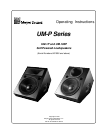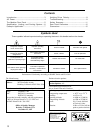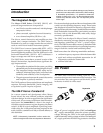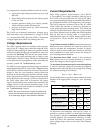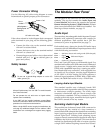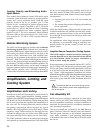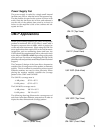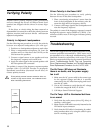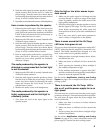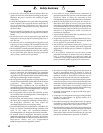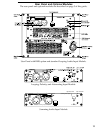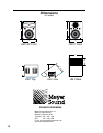'
4. Send the audio signal to another speaker to insure
signal presence and that the level is within the
proper range. Turn the source level down before
reconnecting the audio input and increase the level
slowly to avoid a sudden blast of sound.
5. If possible, monitor the audio source with headphones.
Hum or noise is produced by the speaker.
1. Disconnect the audio input. If the hum ceases, the
noise originates somwhere earlier in the signal
path. If the noise persists, the problem is within the
UM-P. In this case return the unit to the factory or
nearest authorized service center.
2. Make sure the XLR cable is securely fastened to the
XLR audio input connector.
3. Send the audio signal to another speaker to insure
signal presence and that the level is within the
proper range. Turn the source level down before
reconnecting the audio input and increase the level
slowly to avoid a sudden blast of sound.
5. Hum or noise can be produced by a ground loop.
Since the UM-P is effectively ground-lifted, this
should not occur unless grounds are extremely
different voltages.
The audio produced by the speaker is
distorted or compressed but the limit light
is not illuminated.
1. Make sure the XLR cable is securely fastened to the
XLR audio input connector.
2. Send the audio signal to another speaker to insure
that the level is within the proper range. Turn the
source level down before reconnecting the audio
input and increase the level slowly to avoid a
sudden blast of sound.
3. Monitor the audio source with headphones.
The audio produced by the speaker is
highly compressed and the limit light is
constantly yellow.
1. Turn down the level of the input signal to the
speaker system.
Only the high or low driver seems to pro-
duce sound.
1. Make sure the audio signal is full-range and has
not been filtered in a previous stage of the signal
chain. If possible, monitor the audio source with
high-quality headphones.
2. Send the audio signal to another speaker to insure
that the signal is full-range. Turn the source level
down before reconnecting the audio input and
increase the level slowly to avoid a sudden blast of
sound.
3. Use a sine wave and/or pink noise generator to
send a variety of frequencies to the speaker.
There is some sound but the On/Temp.
LED turns from green to red.
This occurs when the heatsink temperature reaches 85°C
(185°F), indicating that the amplifier is thermally over-
loaded. The limiter threshold has dropped to a safe
level, so the audio level is probably reduced.
1. Make sure there is enough clearance above, below,
and behind the unit.
2. Make sure there is sufficient air flow around the
unit.
3. Avoid exposing the heatsink to direct sunlight if
the ambient temperature is high.
4. If the ambient temperature is greater than 30°C
and this condition occurs frequently, contact Meyer
Sound to order the optional Fan Kit.
See the section Amplification, Limiting, and Cooling
System on page 6 for a complete discussion about the
cooling system.
There is no sound, the On/Temp. LED is
dim or off, and the power supply fan is on
high speed.
This extremely rare event occurs when the power supply
overheats, causing a 1-2 minute interruption in operation.
The unit turns on again when the power supply has
cooled sufficiently.
1. Make sure there is at least six inches clearance
behind the unit.
2. Make sure there is sufficient air flow around the
unit.
3. Avoid exposing the unit to direct sunlight in high
ambient temperature.
See the section Amplification, Limiting, and Cooling
System on page 6 for a more information about the
power supply’s internal fan and cooling system.



